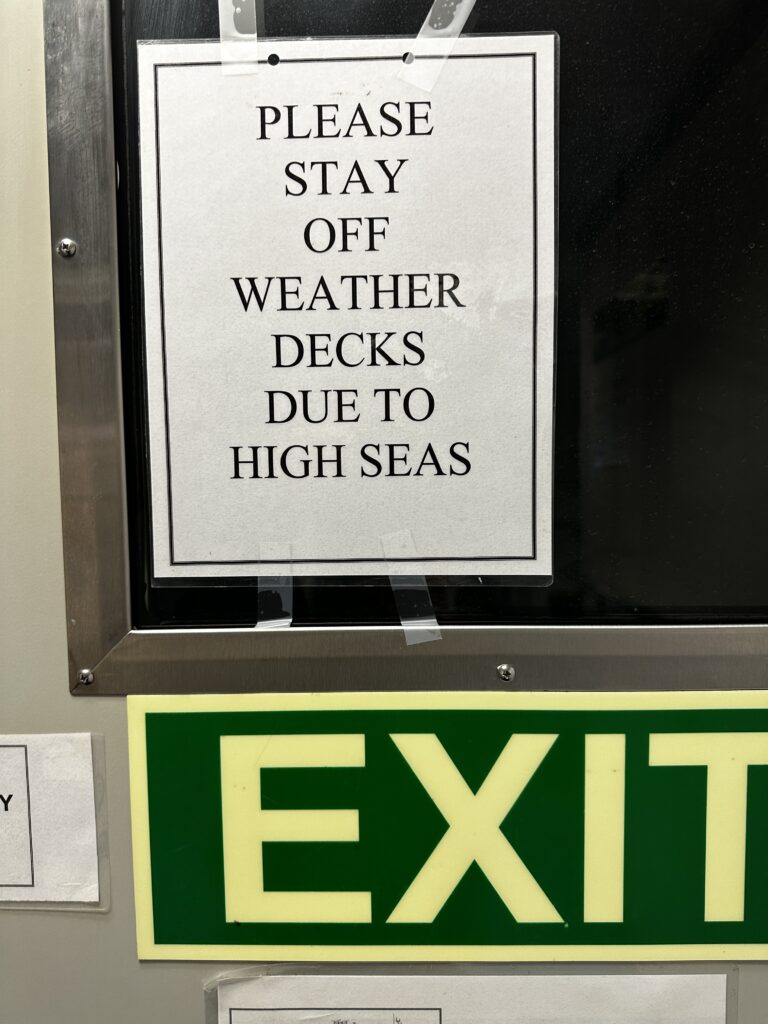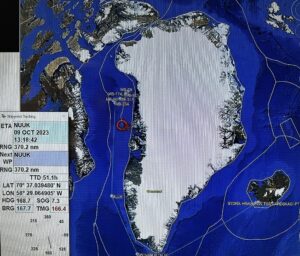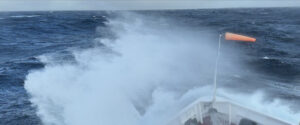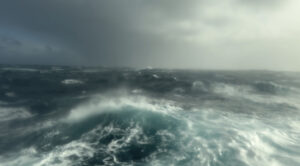
Transit Update: Back to the Beaufort Scale
As promised, this post provides an update on the ocean conditions during our return transit. Compared to the relative calm we enjoyed during the previous six weeks, the passage hit livelier conditions that led to tumult in the galley, tumbled more than a few stomachs and, not least, reminded us of the Beaufort Scale as a universally recognized guide for judging the effects of wind speed on the ocean.
‘Energetic,’ you say?
Most definitely. Expedition 400 Captain Harm Nienhuis reported that shortly after leaving the final drilling site of the expedition, the ship “encountered a strong gale for a while, a Beaufort Scale 9.” A Beaufort 9 is categorized as a “Severe Gale,” with winds ranging from 41 to 47 knots. This is the equivalent of 47 to 54 miles per hour. This causes what the Scale characterizes as “high waves” and crests that “began to topple, tumble, and roll over.” More poignantly, it caused the cancellation of the ritual of morning coffee on the deck.

How did this gale affect the voyage?
The strong wind resulted in waves of approximately six to seven meters (19.685 feet to 22.9659 feet), and the wind direction, blowing straight on the bow, significantly slowed our progress. A glance at the map 48 hours after our departure from the working site showed minimal movement as the JR crawled south toward the lower tip of Greenland.
Gales are one thing; gusts are a whole “other”
While gales are one challenge, gusts present an entirely different situation. A gust represents a sudden, often dramatic burst of wind speed. Meteorologist Erick Adame notes that, “to be classified as a wind gust, the brief increase in wind must be at least 10 miles per hour faster than the average wind speed.” During this gale, Captain Nienhuis reported that the seas delivered gusts of 50 to 55 knots, reaching Beaufort 10, which is considered storm force wind.
In his characteristically measured tone, he noted that these were not sustained winds, but rather intermittent gusts. Crew members certainly felt occasional bursts, with some retreating to their bunks to alleviate queasiness. We survived, swaggering out of our cabins like old salts; not realizing the real drama was yet to come.
The “Big Roll”
As we rounded the southern tip of Greenland, the wind from the portside and port quarter pushed us along, so we managed to keep the speed up to over 10 knots.

Gale force winds of 35 to 40 knots, equivalent to Beaufort Scale 8, presented additional challenges. These winds gradually shifted more forward to the port bow, further slowing us to a speed of about 8.5 knots. At this point, standard waves were between a sizeable six and seven meters (nearly 20 to 23 feet) in height, on average. As it turns out, nature scoffs at averages.
The final blow, a literal one, came when a portside wave that by the captain’s best guess was “around 10-to-12 meters” (32.8084- 39.3701feet) walloped the ship just in time for dinner. Nienhuis remarked,
“This one stood out.”

The smackdown tossed dishes and jars off of shelves in the galley. Even the microwave oven fell off of the counter. Remarkably, the expedition’s intrepid kitchen crew managed to resurrect the dinner and serve it up in less than half-an-hour. Fortunately, no one sustained serious injuries during this event. A crew member aptly dubbed this incident “the big roll” and even managed to capture it on film.
Admiral Beaufort would have been proud.